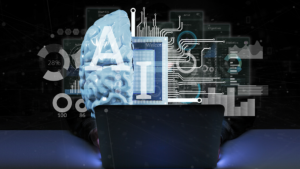


Boopathy Raja G
5 Minutes read
Designing UX for AI Agents: How to Make Autonomous Systems Truly User-Centric
Have you noticed how AI is everywhere these days? From responding to your queries to assisting with email writing , it’s quickly becoming a part of our daily lives. But there’s a new, even smarter kind of AI emerging — and it’s going to change how we interact with technology forever.
We’re referring to agentic AI applications, also known as AI agents. These aren’t just tools waiting for your commands — they’re like very clever digital assistants that can figure things out, plan steps, and even complete tasks on their own or autonomously.
This shift has huge implications for how we design websites and apps. We now need to rethink how we build experiences so that people can work with these super-smart systems easily and confidently.
What Exactly Is This "AI Agent" We're Talking About?
Think about your current apps. You click buttons and type commands, and the app does exactly what you tell it. Simple, right?
Now, imagine an AI agent. It’s different because it can:
- Understand your true goal: Instead of you saying, “Find flight,” it might understand, “I need to visit my family next month —find me the best way to get there within my budget.” It grasps the bigger picture of what you’re trying to achieve.
- Plan its own steps: If you ask it to plan a trip, it won’t just look for flights. It will also look for hotels, rental cars, and even suggest activities—all on its own, figuring out the best order.
- Act on its own (with your permission): Once it has a plan, it can book the flights and hotels for you —without you having to click each individual “book now” button. It acts independently to complete the task.
- Learn and get better: The more you use it, the more it learns your preferences, making future interactions smoother and more personalized.
- It has “agency”: This means it can make decisions and take action to achieve a goal, instead of passively waiting for your next command.
Think of it like having a really smart personal assistant living inside your computer or phone.
The Big Change: From Giving Orders to Working Together
For years, app and website design has followed the same pattern: we give commands, and the system executes — “Click here,” “Type this,” “Buy that.” It’s always us instructing the machine.
But with AI agents, the dynamic changes. It’s no longer about giving orders —it’s about collaboration. You’re delegating
tasks to a smart partner who can think and act with some independence.
This new human-AI relationship requires a fresh design mindset. Here are some key principles:
- What’s the AI Doing, and Why?
Imagine your smart assistant is doing something, and you don’t want it to just disappear and suddenly present the final result. You’d want to understand its progress, its decisions, and any roadblocks it encounters.- Design Solution: We need to show what the AI is doing. This means clear progress bars, simple explanations of why it took a certain step, and maybe even a quick summary of the information it’s using. We want to avoid the “black box” feeling where you don’t know what’s happening inside.
- Can I Rely on This AI?
When AI handles sensitive tasks, like booking flights or managing finances, you need to trust it. But you also need to feel in control.- Design Solution: Give users clear ways to pause the AI, change their mind, or even step in and do something themselves. Think of a “Stop” button, an “Undo” option, or a simple “Are you sure you want me to do this?” question before it takes a big step. This builds confidence and makes people feel safe.
- Should the AI Speak Up or Wait?
Sometimes, the AI might predict what you need before you even ask. It might pop up with a suggestion. Other times, it should probably wait for you to start the conversation.- Design Solution: We need to find the right balance. An AI that’s constantly interrupting might be annoying. One that’s always silent might not be helpful enough. Designing when the AI offers help and when it waits for your input is crucial. It’s about being helpful, not pushy.
- How Do I Teach My Smart Helper?
Just like you’d give feedback to a human assistant, you should be able to tell the AI what you liked, what you didn’t, or what it got wrong. This helps it learn and improve.- Design Solution: Simple feedback buttons (such as thumbs up/down) or easy ways to correct something the AI, has done are important. This helps the AI get smarter over time and tailor itself to you.
- What Happens When Things Go Wrong?
Even the smartest AI will make mistakes or run into unexpected problems. How it communicates those issues is essential.- Design Solution: The AI shouldn’t just crash or give a confusing error message. It should clearly explain what went wrong, offer possible solutions, or ask for your help. It’s about being graceful and guiding the user through any issues that may rise.
The Future Look: Beyond Just Screens
As AI agents become smarter, the way we “see” and “use” them might change too. We might not always interact with them through a traditional screen full of buttons. It could feel more like a natural conversation, or the AI might quietly handle things in the background while you focus on other
tasks. What does a “hidden” design look like, and how do we make sure it still feels helpful and reliable?
Conclusion
AI agents are not science fiction anymore; they’re becoming real and are poised to be used in businesses, healthcare, education, and our homes.
If these powerful tools are difficult to use, confusing, or lack trustworthiness, people won’t adopt them. That’s why designing clear, helpful, and transparent ways for people to interact with AI is not just a good idea – it’s absolutely critical for their success.
As designers, we stand at the forefront of this exciting new frontier. It’s time to rethink our principles, challenge our assumptions, and sculpt the collaborative future between humans and intelligent agents.
Related Insights


Closed-Loop Energy & Carbon Optimization for Manufacturing Lines



AI-Driven Pain Assessment: Leveraging Facial and Vocal Biomarkers to Transform Patient Care

